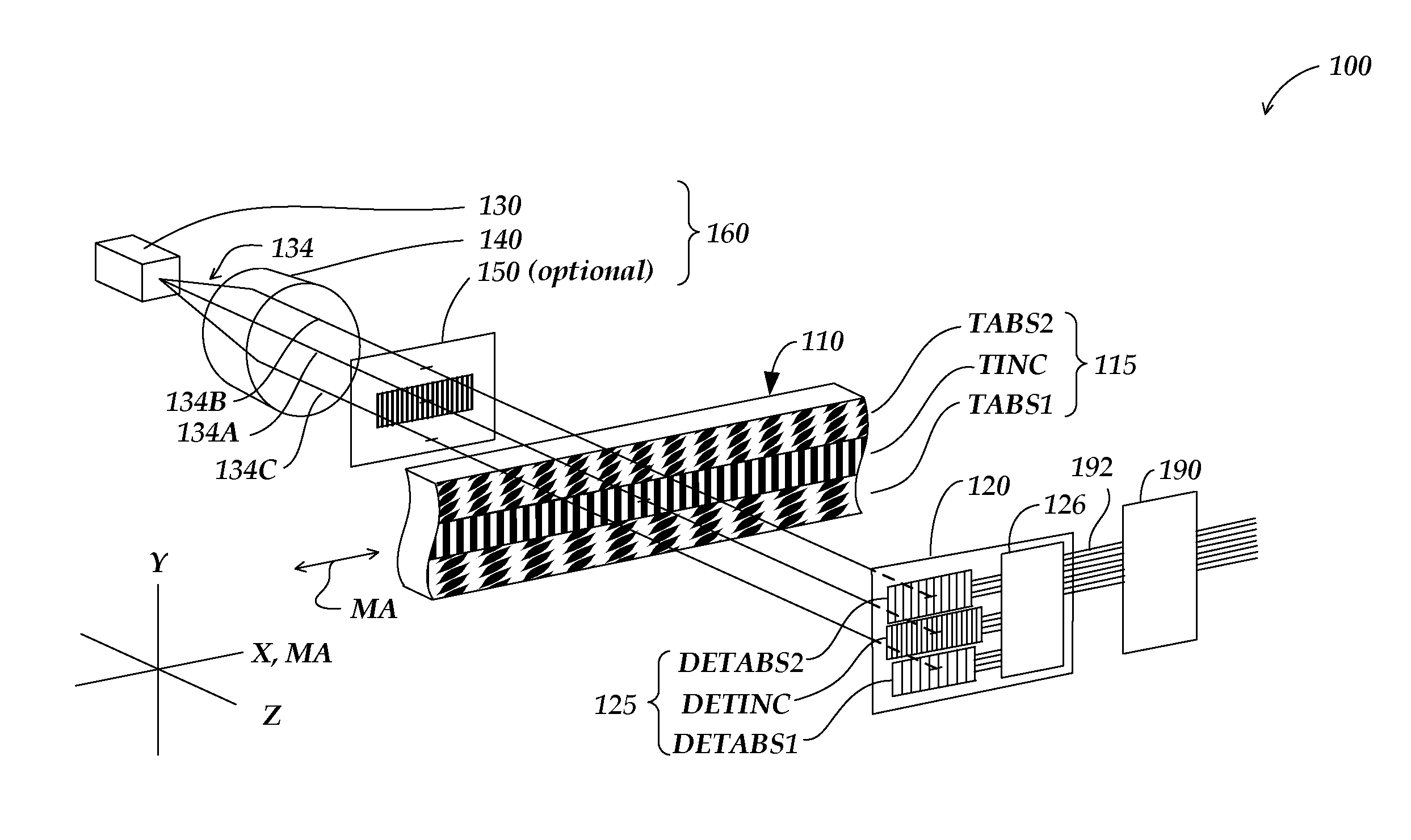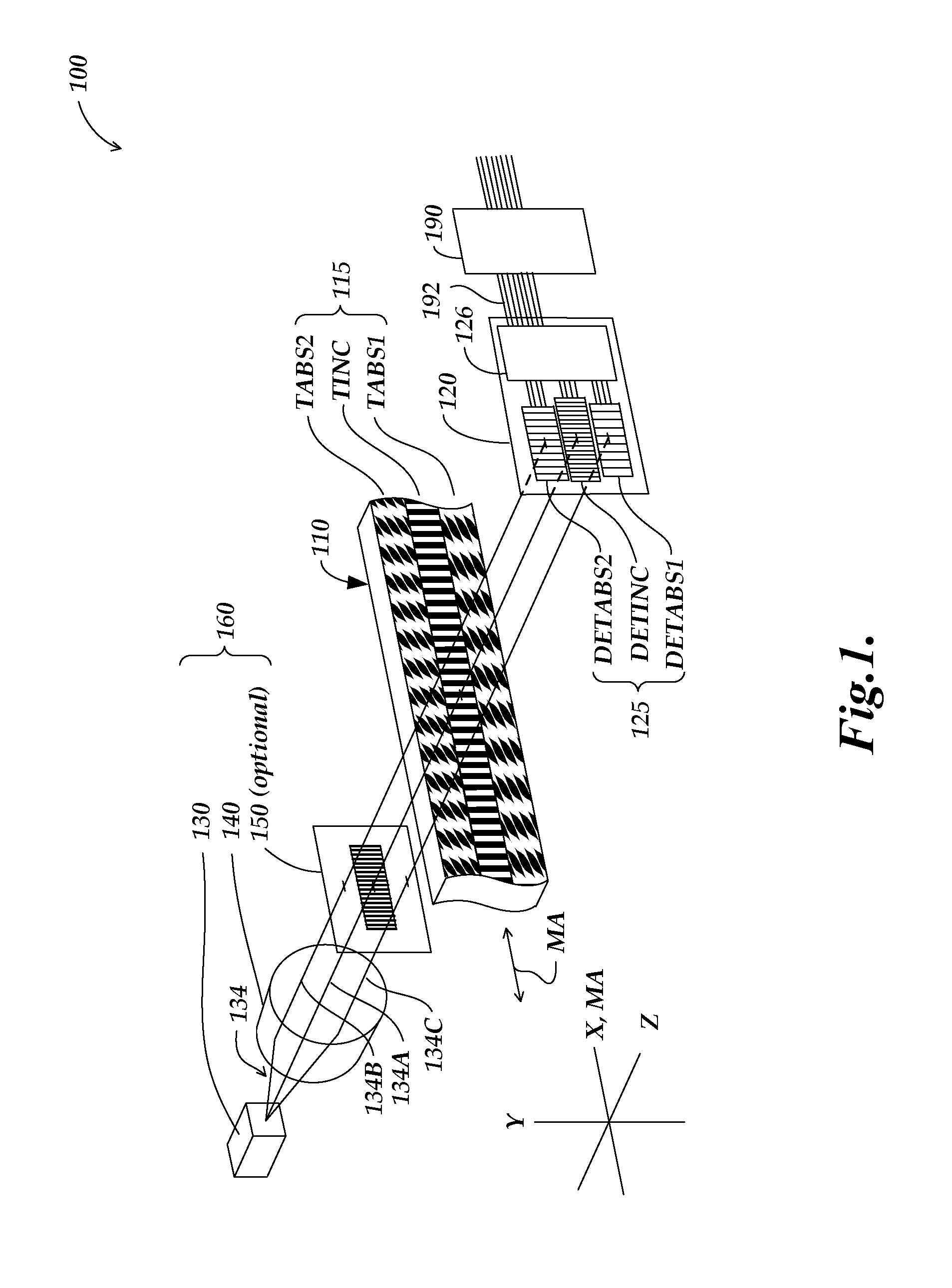Absolute optical encoder with long range intensity modulation on scale
an optical encoder and scale technology, applied in the field of precision measurement instruments, can solve the problems of limited range of this technique, general limit of resolution, and general unoptimized technique, and achieve the effect of increasing the range-to-resolution ratio, without increasing the overall scale width
- Summary
- Abstract
- Description
- Claims
- Application Information
AI Technical Summary
Benefits of technology
Problems solved by technology
Method used
Image
Examples
Embodiment Construction
[0030]FIG. 1 is an exploded diagram schematically illustrating one embodiment of an absolute optical encoder configuration 100 that can employ the dual-modulation scale track pattern features and detector configurations disclosed herein. Certain aspects of the encoder configuration 100 are described in more detail in the previously incorporated '813 patent. As shown in FIG. 1, the encoder configuration 100 includes a scale element 110, detector electronics 120 which are connected to signal generating and processing circuitry 190 by power and signal connections 192, and an illumination system or portion 160 comprising a light source 130 for emitting visible or invisible wavelengths of light, a lens 140, and an optional source grating 150. The light source 130 may also be connected to the signal generating and processing circuitry 190 by power and signal connections (not shown). The scale element 110 includes an absolute scale pattern 115 including three scale track patterns—an increm...
PUM
 Login to View More
Login to View More Abstract
Description
Claims
Application Information
 Login to View More
Login to View More - R&D
- Intellectual Property
- Life Sciences
- Materials
- Tech Scout
- Unparalleled Data Quality
- Higher Quality Content
- 60% Fewer Hallucinations
Browse by: Latest US Patents, China's latest patents, Technical Efficacy Thesaurus, Application Domain, Technology Topic, Popular Technical Reports.
© 2025 PatSnap. All rights reserved.Legal|Privacy policy|Modern Slavery Act Transparency Statement|Sitemap|About US| Contact US: help@patsnap.com



